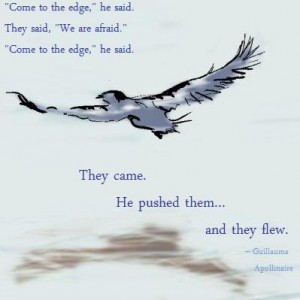As we’re kicking off our Evolved Publishing effort, I’ve been interested–and confused, and frustrated, and saddened–by several online discussions about the need for, and efficacy of, independent editing of an author’s manuscript.
As Kristine Rusch so often states (you should be following her KrisWrites blog, by the way), self-published authors need to think more like independent businesspeople—because that’s what we are.
Certain universal rules apply to business, and here’s one of the biggies: VALUE sells. The variable equation for VALUE, assuming a constant need or desire, is a simple Quality:Price ratio. The first variable in that equation is… well, the first part. Fail there, and the second part becomes irrelevant.
No matter how attractive your price, you, Dear Seller, will not persuade most potential buyers if your quality has not met at least minimum standards in a past sale, or if you’ve established a reputation for poor quality.
This applies when you sell a car, a refrigerator, a pair of shoes… or a book.
Sure, you may get customers to buy your product once, but disappoint them on your quality obligation, and those customers will never buy your product again. Authors make a living when they generate positive word-of-mouth and a steady stream of loyal book buyers (repeat customers). Fail to deliver quality, and your business is finished almost before it begins.
Many self-published authors say, “But I just can’t afford an editor.” Most such authors doom themselves to failure. Listen, if you, as an aspiring author, have no money to pay an editor the full fee up front, then work with them on a smaller up-front fee + commission basis, or on a larger, straight commission basis. Get creative, but be prepared to be generous to an editor (or cover artist, or anyone else who assists you on a commission basis) who is willing to assume that risk. And make no mistake: they’re taking a big gamble. If your piece doesn’t sell well, they just worked for nothing.
The evolutionary state of the publishing industry offers many challenges, to be sure, but also many opportunities. Be creative in your approach. Come on, you’re a writer, an artist! Draw on all that creativity when approaching the business aspect of your writing career. Don’t take the easy, cheap, lazy (or all of the above) way out. Don’t doom yourself to failure.
Do you need an editor for your book? Yes. Every writer needs an independent, objective pair of eyes to weed out their nasty little habits, those recurring bugaboos to which we’re psychologically blinded, even if we think we know what we’re doing.
Resist this temptation: “Hey, I’m a good writer. I’ve studied. I’ve learned. I can do it on my own.”
Your book will be the worse for it. I promise.
No business survives for long that does not offer VALUE (Quality:Price). A robust quality assurance program is essential to all businesses, and your business as a writer is not unique, not immune to that requirement.
We at Evolved Publishing are trying to work as a team, to assure first ourselves, and ultimately our readers, that we have produced a high quality, professional product. Perhaps we’re a good fit for you. Perhaps not.
But please… don’t dash your dreams on the rocks by clinging to the stubborn insistence that you can do it all on your own. A well-coordinated team always outperforms the individual. Always.
And quality matters. Always. Especially when you’re competing as a raindrop in a hurricane of options.
‘Til next time, and as always, remember: To write well, you must work hard. To succeed in this tough gig, you mustn’t be lazy (or discouraged).





Please follow me here: